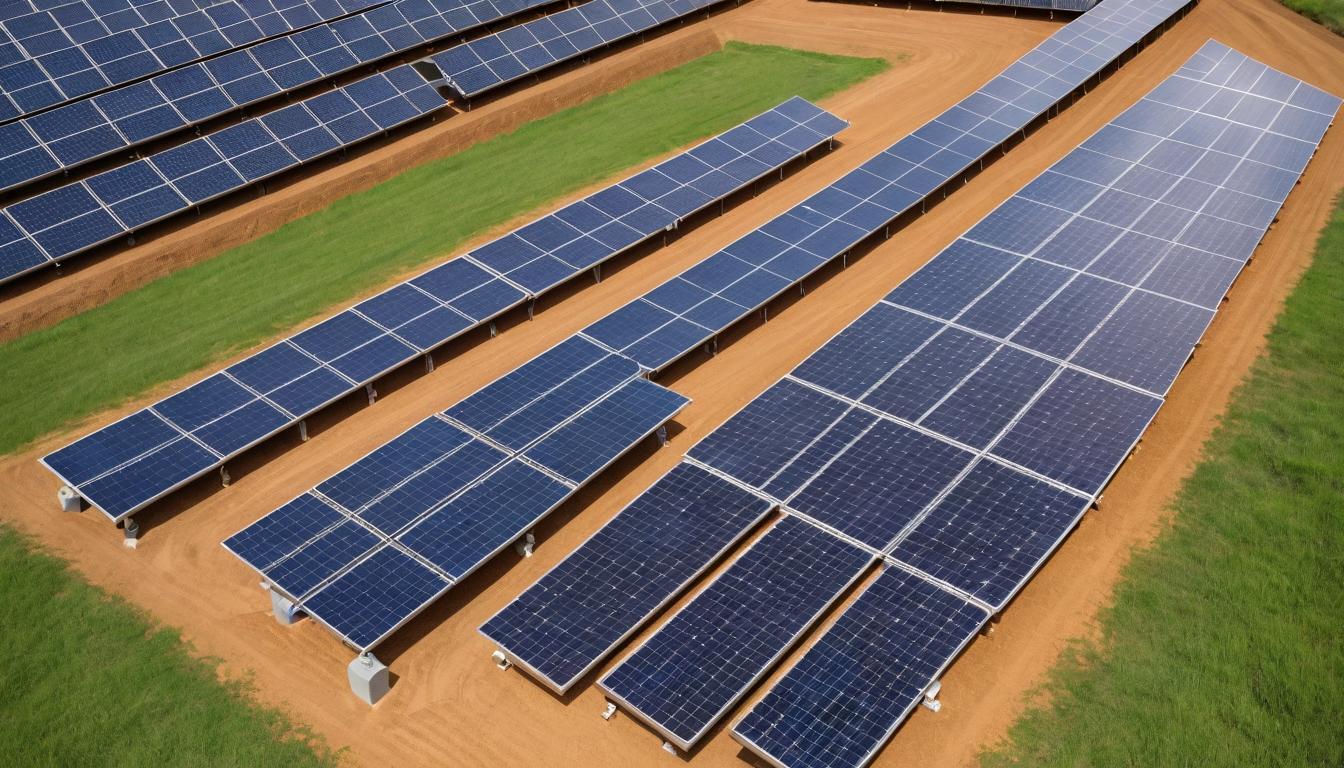Walking through a solar farm in the Nevada desert, the silence is almost unnerving. Thousands of panels stretch toward the horizon, but the real action happens invisibly - in the micro-inverters humming quietly, the bifacial cells capturing reflected light, and the AI algorithms predicting cloud movements minutes before they arrive. This isn't your grandfather's solar industry anymore.
While residential rooftop installations continue their steady march across American suburbs, the most exciting developments are happening at the edges of what we thought possible. Perovskite solar cells, once confined to laboratory demonstrations, are now scaling toward commercial production with efficiencies that threaten to make silicon panels look quaint. The breakthrough came not from better materials science alone, but from solving the durability problem that plagued early versions. Companies like Oxford PV are now producing tandem cells that layer perovskite over silicon, pushing conversion rates above 30% - a number that seemed theoretical just five years ago.
Meanwhile, the solar-wind hybrid revolution is quietly reshaping rural America. In West Texas, where transmission lines are scarce and land is plentiful, developers are combining solar farms with wind turbines in configurations that would have seemed illogical a decade ago. The solar generates during peak daylight hours when air conditioning drives demand, while wind often picks up in the evening when the sun dips below the horizon. The same grid connection serves both, dramatically improving economics while smoothing output curves that once gave grid operators headaches.
Storage has become the secret sauce that makes everything work. The lithium-ion battery boom, driven by electric vehicles, has created a secondary market for repurposed EV batteries now finding second lives as stationary storage. These aren't the pristine cells going into new Teslas, but batteries with 70-80% of their original capacity that can still provide crucial grid services for another decade. The circular economy meets energy resilience in shipping container-sized units scattered across solar farms from California to North Carolina.
Financing innovation might be the least sexy but most important development. Solar-as-a-service models have eliminated upfront costs for homeowners, while virtual power plants are creating revenue streams that make solar-plus-storage systems pay for themselves faster. In Vermont, Green Mountain Power pays customers for access to their Powerwalls during peak demand events, creating a distributed grid resource that benefits everyone. The utility gets capacity without building new peaker plants, customers get backup power plus checks in the mail, and the environment wins through reduced fossil fuel consumption.
The international trade landscape continues its dramatic shifts. While Chinese manufacturing dominance remains largely unchallenged for conventional panels, American and European companies are carving out niches in specialized equipment and high-efficiency modules. The Inflation Reduction Act has sparked a manufacturing renaissance in states like Georgia and Ohio, where new factories are rising to produce everything from polysilicon to racking systems. The supply chain diversification isn't just about geopolitics - it's creating competition that drives innovation and lowers costs for everyone.
Community solar is solving the renter's dilemma. For the 100 million Americans who can't install rooftop solar because they rent, live in multi-unit buildings, or have shaded roofs, shared solar gardens are becoming the answer. Subscribers buy or lease portions of larger arrays located elsewhere, receiving credits on their electricity bills. The model has proven particularly powerful in low-income communities, where savings on energy bills can represent meaningful financial relief. States like New York and Minnesota have led the way with supportive policies, but the concept is now spreading nationwide.
The digital transformation of solar might be the most overlooked story. Monitoring platforms now provide real-time performance data down to individual panels, while machine learning algorithms optimize cleaning schedules based on weather patterns and soiling rates. Drones conduct thermal inspections identifying failing cells before they impact overall system performance. What was once a relatively simple installation business has become a data science operation, with companies competing on analytics as much as hardware.
Looking ahead, the integration of solar into building materials promises to make today's panels look as primitive as roof-mounted satellite dishes. Solar shingles that are virtually indistinguishable from conventional roofing, transparent solar windows that generate power while letting light through, and even solar pavement for pathways and parking lots are moving from concept to commercialization. The future isn't about adding solar to buildings - it's about buildings that are solar.
The speed of change continues to accelerate. Costs have fallen 90% in the past decade, and there's no reason to believe the trend won't continue. What seemed like ambitious predictions five years ago now look conservative. The solar revolution isn't coming - it's here, and it's just getting started.
The solar revolution is accelerating beyond panels - here's what comes next




